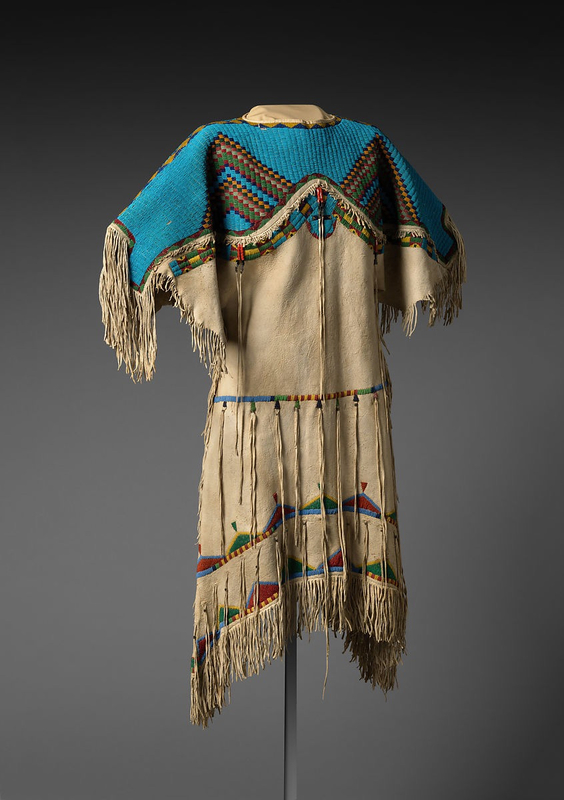Cloth and Costumes
Native American Halloween costumes are often inaccurate representations of what Native Americans wear. When designed for women, these costumes tend to be overly provocative and revealing, testifying to a long tendency to over-sexualize Indigenous women. Often times these costumes are short, contain the wrong colors, patterns and beading. These costumes can also contain headpieces with feathers that are also inaccurate. These tend to be based on Western tribes and not Eastern tribes because the Eastern tribes had begun to adopt colonial traditions and clothing. This further spread the stereotypes of what Native Americans wear. Traditional Native American clothing has a purpose and meaning behind the way it was designed as well as when it should be worn. Certain colors, beadwork, shapes and animals on the clothing represent different meanings. The purposes of traditional native clothing varies. There are clothing pieces made for traditional dance, various rituals and ceremonies. When Halloween costume companies throw patterns, beads and colors together on clothing that looks “fashionable” and provocative they misrepresent the Native American community and diminish the richness and diversity of Indian fashions.

